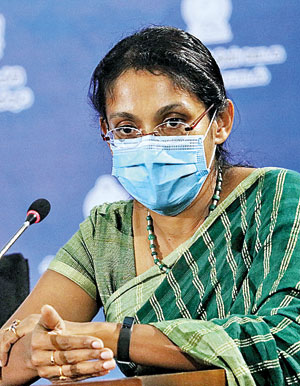News
Air-borne transmission playing important role in spreading COVID-19: Prof Malavige

Prof. Neelika Malavige
Most viruses which cause respiratory diseases are mainly transmitted through droplets but there is a certain level of air-borne transmission, explained Prof. Neelika Malavige, Head of the Department of Immunology and Molecular Medicine, University of Sri Jayewardenepura.
Specifically looking at the SARS-CoV-2 virus which is causing COVID-19, she said that there is emerging evidence that while there is certainly droplet transmission, air-borne transmission is also playing an important role in spreading disease.
Explaining that ‘air-borne transmission’ occurs when the virus droplets from an infected person become aerosolized (stays in the air) which are then inhaled by healthy people who get the disease, Prof. Malavige says that such a scenario is more dangerous in a closed, indoor (restaurants, bars, etc) environment than an outdoor environment. The more people in such an environment, the more chances of the spread of the disease.
In such a situation, where droplets from the infected, when they talk, sing, laugh loud, sneeze, cough, can remain in the air for some time, in addition to the precautions of hand-hygiene and social distancing, an essential component is face-mask wearing. The best though is to avoid such indoor places, she advised.
According to Prof. Malavige proper ventilation is extremely important in indoor environments, while it is crucial to keep windows and doors open, so that there is air circulation. The spread is so much more in poorly-ventilated, closed indoor environments, which should be avoided.
Meanwhile, droplet transmission is when droplets in varying sizes produced by the infected through sneezing, coughing etc., remain suspended in the air for a while before dropping to the ground. These travel usually less than 2 metres and this is why social distancing in addition to hand-hygiene and face-mask wearing is vital, she added.



